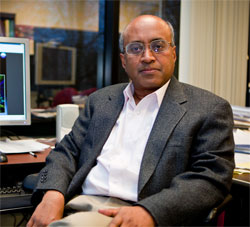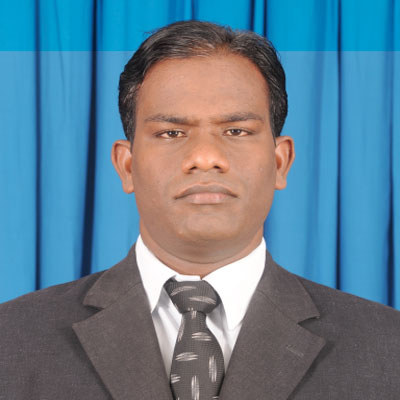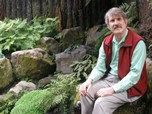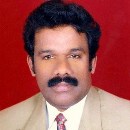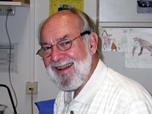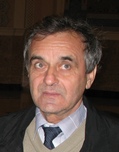Scientific Program
Keynote Session:
Title: Path to 4.5°C global surface warming again from today’s CO2 level
Biography:
Gene Richard Heinze Fry completed his PhD in resource economics from Cornell University in 1989. He was the Director of policy and planning for the Maine Energy Office, then economist in the electric power division of the Massachusetts utility commission for 13 years. After stints as contributing editor for climate change issues at the Global Environmental Change Report and Business and the Environment, he managed energy efficiency program evaluations for Northeast Utilities for 3 years, until he retired in 2011. He has published 2 articles in refereed.
Abstract:
Earth’s surface will warm, due to today’s 406 ppm CO2, by almost 3 times as much as it has since 1880. Already, land surfaces have warmed 1.2°C (5-year mean) over the last 50 years and 1.7°C over the last 130. Sea surfaces have warmed 1.1°C over the past 100. Ocean depths add more heat every 2 years than cumulative human energy use. Analysis and extrapolation from Vostok ice core data connects today’s CO2 levels with 7.4°C surface warming there, above the 1951-80 mean, or ∆ 4.5°C globally. This is consistent with CO2 and ∆°C data from 4 and 14 million years ago. Adding Vostok CH4 data yields 7.8°C global warming. ∆ 4.5°C globally (more inland and poleward) is enough to make future Kansas hotter than Las Vegas now. The analysis suggests major lag effects to come, mostly from albedo changes. Some come this century, from disappearing Arctic sea ice and anthropogenic sulfates, plus decreasing snow and cloud cover, all multiplied by the greenhouse effect of more water vapor. Albedo effects from ice loss in Greenland and Antarctica, plus Deep Ocean warming, happen more slowly. When Earth last had 400 ppm CO2, sea levels were 20-35 meters above todays, indicating up to 50% ice loss eventually. Thawing permafrost holds twice as much carbon as the air, threatening 9°C warming if eliminating carbon emissions is delayed. A substantial and rising carbon tax, with tax credits for CO2 removal (CDR), is vital. 7 CDR methods are discussed briefly.
Title: Earth’s climate in the 20th and 21st Centuries: Pollution and climate change
Biography:
Venkatachalam Ramaswamy is the Director of NOAA’s Geophysical Fluid Dynamics Laboratory (GFDL), one of the world’s premier climate modeling centers, and the Professor in the Atmospheric and Oceanic Sciences Program at Princeton University. He received his PhD in Atmospheric Science from the State University of New York at Albany in 1982. His research focus is the mathematical modeling of the global climate system, advancing the understanding of atmospheric physics and chemistry, and investigating climate changes. He has published over 160 papers in refereed journals, won many prestigious awards, and author/reviewer on the Intergovernmental Panel on Climate Change.
Abstract:
The emissions of greenhouse gases due to human influences has caused perturbations in the Earth system, initiating major changes in the greenhouse effect and leading to global warming. Other factors such as aerosol emissions and land-use change also due to human activity, along with changes in solar radiation and volcanic eruptions causing aerosol increases, have also affected the planetary heat balance. In this presentation, we discuss how each of the natural and anthropogenic factors has contributed to alteration of the Earth system from global to continental to regional scales. The climate variables of particular interest for societal impacts are temperature, precipitation, and weather extremes. For this investigation, we use state-of-the-art numerical models of the climate system, together with observations drawn from multiple platforms (surface, satellite, and aircraft). We analyze the key drivers over the 20th Century, the impacts they have generated, and the unresolved issues. We then explore the impacts that are expected in the 21st Century. In the context of both the 20th and 21st Centuries, we discuss the impacts expected due to global warming and the significance of the resulting climate change for extremes in weather e.g., heat waves, tropical storms, sea-level rise, forest fires, droughts, excess rainfall. This brings to the fore the connection between the scientific understanding of pollution and global warming based on rigor, and the manner in which climate change impacts society including that arising due to the nonstationary behaviour of the changes.
Title: Reliability of climatic prediction of Hindu almanacs of Hindus in Sri Lanka
Biography:
N Piratheeparajah is a Senior Lecturer in Geography at University of Jaffna, Sri Lanka. His research interests are Climate Change and Water Resources Management. He has completed his BA(Hons.) in Geography in 2006 and completed his MPhil in climatology in 2013. He has published two books and thirteen research articles in international and national indexed and refereed journals. He presented eleven research papers in international and national research conferences. Piratheeparajah has written 121 articles in the local and national news papers to create the awareness about Climate change and Disaster management.
Abstract:
There is a very marvelous system using by Tamils especially by Hindus in Sri Lanka, which is Almanac (Panchangam) for three thousand and five hundred years for their holy, ritual and personal purpose. There are two types of Panchangam one is called sentential almanac (Suththa Vaakkiya Panchangam) and other one is mathematical almanac (Thirukkanitha Panchangam). However this study is focusing the reliability of climatic prediction of sentential almanac compare with the real meteorological measurement. The main objective of this study is to analyze the relationship between the prediction of Panchangam and actual climate phenomena specially amount of received rainfall and rainy days. All climatic data were collected from Department of Meteorology and the collected data and the facts that are indicated in the almanac were analyzed using correlation method. Relationship between the Indicated marakkal amount (this is about total rainfall of a year) in the panchangam and the actual total rainfall amount is in a positive manner, which equals to 0.78. Thetkoddam (which is related to the change of angel of the sun) and Kandavanam (this is about the amount of solar radiation) are in same level for sixty years and the dates of beginning and end also same. Extreme weather events such as flood, cyclones, storm, severe thunderstorm and drought have been predicted in well advance in very accuracy level in the almanac for hundred ten years. But there is a weak correlation in the break and retreat of North East Monsoon and South West Monsoon Winds. Four climatic phenomena’s out of five are in strong positive relations in the almanac measurement and actual measurement. Therefore, accurate interpretation is determine the reliability of Hindu almanacs and if it is correct interpretation the almanacs will be very useful weather forecasting system and will be used for the planning and development activities in all the sector especially for the agriculture sectors.
Oral Session 1:
- Climate Change and Climatology | Sustainability and Climate Change | Oceans and Climate Change | Earth Science | Natural Resource Management
Title: Indian monsoon inter-annual variability and climate change
Biography:
Madhav Khandekar is a former research scientist from Environment Canada and was an Expert Reviewer for the IPCC (Intergovernmental Panel on Climate Change, a UN Climate Panel) 2007 Climate Change Documents. Khandekar holds M.Sc in Statistics from Pune University, India and M.S and PH.D. in Meteorology from the Florida State University USA. He has published over 150 papers, reports, book reviews and scientific commentaries. While at Environment Canada, Khandekar published a book ‘Operational Analysis & Prediction of Ocean Wind Waves” (Springer-Verlag) published in December 1989. Khandekar is a Lead Author of a Chapter on Extreme Weather in a report “Climate Change Reconsidered-II” published in 2013 by the NIPPC-Nongovernmental International Panel on Climate Change.
Abstract:
The Indian monsoon and by extension the South Asian monsoon impacts close to three billion people of South Asia on an annual basis. Timely arrival of monsoon and its steady progress over the summer (June-September) months is critical for agriculturally dominated countries of South Asia. A moderate to severe drought significantly reduces grain yields and poses acute problem of lack of potable water for billions. A moderate to heavy monsoon can produce extensive flooding in low-lying areas, while alleviating water shortage problems. In this study, inter-annual variability of floods and droughts in summer monsoon has been analyzed using an excellent data set of over 200 years. It is found that floods and droughts in the Indian/South Asian monsoon have occurred irregularly throughout the 200-year data set, with No linkage to recent warming of the earth’s climate or climate changes in the past. The droughts and floods are found to be linked to large-scale atmosphere-ocean features like the ENSO (El-Nino/Southern Oscillation) phase and the Equatorial Indian Ocean Dipole that dominate the equatorial Indian Ocean during the summer months. Additionally, several cases of back-to-back drought and flood have been identified as seen in the enclosed table. An empirical model based on large-scale atmospheric and oceanic features is developed which provides a useful guideline for forecasting floods and droughts, few weeks to few months ahead of the monsoon season.
Title: Climate change and its implications on Iraq: A review
Biography:
Nadhir Al-Ansari has completed his PhD at the age of 29 years from Dundee University. He is Professor at the department of Civil, Environmental and Natural Resources Engineering at Lulea Technical University, Sweden. He has published more than 380 papers in reputed journals and 13 books. He has been serving as an editorial board member of 6 International journals. He has been awarded several scientific and educational awards; among them the British Council on its 70th Anniversary awarded him as top 5 scientists in Cultural Relations. He is the Member of several scientific societies. He has supervised more than 60 postgraduate students at different Universities.
Abstract:
Global Climate Change has become a hot topic nowadays for the media, politicians and world organizations which have conflicting views on its extent and what to do to avoid its impacts. This paper attempts to check how real this change is and the historical evidence of its occurrence and describes its causes and what does this mean for Iraq. Iraq is located in one of the most vulnerable regions of the world and it has felt these effects in the forms of recurrent droughts, disturbed pattern of precipitation in the form of its quantity, intensity and timing, increased desertification and sand storms. This is also manifested by the diminishing of the water resources of both The Tigris and Euphrates Rivers whose catchment areas suffer the same impacts. The paper discusses also some of the performed modelling studies carried out so far to predict the future of these two rivers. The expected sea level rise is also explored and the future effects on Iraq’s Gulf shore line, its navel and land installations there and impacts on the deltaic region of southern Iraq explained. Other consequences of future climate change impacts are outlined in terms of water scarcity, farmland deterioration and migration of people with expected grave problems on the social peace. Some recommendations to mitigate and alleviate the situation are given.
Title: Exploring the gap between climate change rhetoric and effective collective action
Biography:
Philipp Aerni is the Director of the Center for Corporate Responsibility and Sustainability (CCRS). He obtained his Master’s in Geography from the University of Zurich and completed his PhD in agricultural economics at ETH Zurich. Prior to his position at CCRS, he worked as a postdoctoral fellow at Harvard University, ETH Zurich, the University of Berne, as well as the Food and Agriculture Organisation of the United Nations (FAO)
Abstract:
The present paper discusses the causes of the failure of the Kyoto protocol to reduce global greenhouse gas emissions and shows why the Paris Agreement is unlikely to become more effective in enabling collective action to tackle the main climate change challenges. The paper argues that effective collective action requires governments to assume the role of facilitators of technological change. They need to co-invest in the development and commercialization of future climate-friendly technologies that facilitate the transformation a petro-based economy into a low-carbon, biology-based economy. In this context, biotechnology plays a crucial role as a platform technology. Alas, biotechnology is framed in the current public debate on sustainable development in Europe as part of the problem rather than part of the solution. That may eventually make the European Union and its member states part of the problem because its current climate change rhetoric aims at pleasing public opinion rather than at addressing the global challenges in an effective way. Moreover it creates confrontation rather than cooperation between the private sector and civil society
Title: Assessment of sea surface temperature variations in Northern hemisphere
Biography:
Iman Rousta has completed his PhD from Tehran University, Tehran-Iran. His PhD thesis has been performed in Climate Change and Atmospheric Blocking. He is currently the Assistant Professor of Climatology at the Dept. of Geography, Yazd University. He has published more than 20 papers in reputed journals. The details of his research interests and activities are available in Google scholar
Abstract:
This paper aimed to study the SST in the Northern Hemisphere between 1948-2013 years based on NCEP/NCAR reanalysis data. The study area is the range of latitudes 55° to 75° N and longitude of 40° W to 70° E. The results showed that there are 4 temperature regimes in the study area (1948-1963, 1964-1986, 1987-1996, 1997-2013) this period can be divided into two larger periods (colder period (1948-1994) and the warmer period (1995-2013). The annual average of SST in the colder period (1948-1994) have been -0.13 ° C below the average of the whole study period, while in the warmer period (1995-2013), it has raised to 0.31 ° C higher than the average. Thus, the SST increased in the second period by 0.44 ° C. In the study period, the year of 2010 and 2006 respectively with the amount of 0.52 and 0.43 ° C higher than the average of the entire study period was the warmest, and the year of 1974 and 1986, respectively with the amount of -0.34 and -0.31 ° C lower the average of the entire study period was the coldest years. The months of Aug and Oct had the highest temperature variation, so that from 1948 to 1994, the temperature of these two months was -0.15 ° C less than the average of whole period, and then from 1995 to 2013 respectively changed to 0.38 and 0.37 ° C higher than the average of study period. The months of Feb and Mar had the lowest temperature variation, so that from 1948 to 1994, the temperature of these two months were respectively -0.11 and -0.10 ° C less than the average of whole period, and then from 1995 to 2013 respectively changed to 0.36 and 0.35 ° C higher than the average of study period.
Title: Methods of CO2 removal
Biography:
Gene Fry completed his PhD in resource economics from Cornell University in 1989. He was the Director of policy and planning for the Maine Energy Office, then economist in the electric power division of the Massachusetts utility commission for 13 years. After stints as contributing editor for climate change issues at the Global Environmental Change Report and Business and the Environment, he managed energy efficiency program evaluations for Northeast Utilities for 3 years, until he retired in 2011. He has published 2 articles in refereed.
Abstract:
Workshop
Title: Air conditioning the mother earth
Biography:
Raveendran Narayanan is double graduate in Mechanical Engineering from Kerala State Board of Technical Education, Kerala India and Human Rights Law from Hentry George School of Economics, New York, USA
Abstract:
Seawater desalination is frequently referred to as a drought proof water supply. Seawater desalination is good for the Middle East States, but very bad for the other parts of the World. Concentrated Brine, Millions of tons of Bio-Hazard cleaning chemicals and many types of bacteria from Heavy Duty Seawater desalination plants already dumped and continuously dumping in to Mediterranean, Red Sea, Arabian Gulf and Indian Ocean since 1974. As Indian Ocean is extended to Atlantic Ocean and Pacific Ocean, the damages are there also. Middle East's climatic conditions accelerate the vigorous growth of many types of unicellular organisms and bacteria. Its results are: - the flora & fauna are becoming whitish colour and dying. Publishing Environmental problems and its remedies in World Congresses on water is not a crime in this environmentally damaged World. A group of giant corporations including their cronies, corrupted anti human & anti-social officials and then U.A.E. Foreign Minister with the support of US officials and Former UN Secretary General are embittering the life of a human person since 1997. Global climatic calamities could have been averted. Potential loss of bio diversity is permanent. Golden ceremonial swords given by U.A.E. royal family played a great roll in these global calamities. Environmental catastrophe now a days happening in the World is due to long term Environmental rape by Middle East States. With limited resources available, the scientific evidences collected will prove the situations and will provide the remedies.
Title: Kόσμοπόλις – by the mathematical One World Mind of God
Biography:
Roman Sergeyevich Kljujkov : Was born in Mariupol, Ukraine in 1980. Graduated from Donetsk State Institute of Artificial Intelligence, Ukraine as programmer. Has worked in MobiDev Company, Mariupol branch since 2014. Interested in computer programming, photography and reading books. In spare time working on private projects in Computer Science in the domains of advanced algorithms & data structures, image processing and computer vision. Programming languages of practical experience: C++, Swift, Haskell, LISP, Go
Abstract:
In ancient Greece, the birth of πÏŒλις – the custom of conflict-free life of people. By the comparison of human and divine laws Heraclitus established the Ecumenical community of people and gods – κÏŒσμοπÏŒλις. Plato discovered the rationality of nature according to the order of 16 ideals-numbers with talans of the World Mind of God. He suggested by godlike copying of a Heraclites unite the authenticity of the empirical ideas with the divine succession of the rational ideals. In his mathematical model ΧÏŽρα necessarily miraculously arose Truth, which is called inspiration, revelation, Qi energy, intuition. Plato encrypted the path to ideals, made Kabbalah the mathematical basis of Cognition – theocentric. Aristotle reversed the direction – anthropocentrism – the main source of selfishness, evil and wars. Christianity, as the path to Salvation, arose directly from Plato's mathematical cabbala, but the secrecy essence of the doctrine, as heresy, was greatly distorted by Aristotle's formal logic. Now we observe deplorable results. Cantor tried to present the ideals of Plato by “transfinite numbers”. But, abandoning the order in the sets, came to paradoxes. The authors by means the multi-stage uniting of units have built up Plato's ideals and integrate Mankind with nature by numerical categories. God the Father – The ideal mathematics of Plato. God the Son is the ideal mathematical model of ΧÏŽρα. God the Holy Spirit is the perfect mathematical modelling. This is a mathematical Thomism and Teiardism, the unification of the scientific cognition of nature with the religious cognition of God. The salvation of the world and nature is only by observing such an order. Help implement!
Title: SEER: Sustainability ethics, ego and risks
Biography:
Esam Elsarrag is the CEO of beGREEN Global-UK. He has more than 25 years of experience in higher education, sustainability standards development, Energy Systems and building physics, gained through his work in the Middle East and Europe. In additional to his work as a consultant, he continues to be active in scientific research in buildings and energy. He has delivered invited lectures and published papers in reputed institutions and journals. He has specialist expertise in sustainable developments, technology development, renewables, and energy modeling and building services
Abstract:
The understanding, commitment and deployment of sustainability ethics are essential for sustainable built environment framework. Organizations and companies are obliged to provide their services under a set of internationally acceptable ethical guidelines and standards. Ethics ensure that sustainability framework is the right approach that addresses and solves environmental, social and economic issues. Getting recognition is human nature however; sustainability should be moved away from the ego’s destruction and individualistic tendencies towards our societies. Creating trust within societies is vital and cannot be achieved unless we maintain qualities within ourselves and commit to ethical guidelines. Destructive ego and infringement of ethical standards can lead to money drain beside high risks in sustainability deployment. It is worth noting that international accreditation of governing bodies is essential to demonstrate competence, impartiality and performance capability of evaluators, i.e. checkers should be checked. Sustainability risks in general may include: Environmental (e.g. non-compliance with the environmental laws), Governance and Corruption (e.g. failure to uphold transparency standards), Social (infringement of rights and violation), Labor (Infringement of health and safety rights) and Climate Change (aggravation of climate change) etc. In buildings practices, developers may face some degree of risk and uncertainty when deploying sustainability standards. However, risks increase when lean analysis is used. In the design phase, long-term sustainability can be achieved by conducting risk analysis by means of simulations and via the optimization of diverse scenarios. In the operation phase, resource minimization and robustness are the guidelines. This paper presents implementation examples, ethical gaps, ego’s destruction and explain why simulation and comprehensive adverse scenarios studies is the pathway for a successful implementation of sustainability frameworks
Title: Quality of medical care delivered to the patients in government hospitals in the city of karachi
Biography:
Hira Sabir Malik has her expertise in evaluation and passion in improving the health and wellbeing. Her open and contextual evaluation model based on responsive constructivists creates new pathways for improving healthcare. She built this model after years of experience in research, evaluation, teaching and administration both in hospital and education institutions. The foundation is based on years of evaluating services of the health care organization, which is a methodology that utilizes the previous generations of evaluation: measurement, description and judgment. It allows for value-pluralism. This approach is responsive to all stakeholders and has a different way of focusing.
Abstract:
The first major objective of this study is to explore the service quality level of Public Hospitals in the city of KARACHI from perspective of patients. Secondly, the satisfactions level of the ailing patients towards the services provided by these health care government sectors in general is investigated. The measurement instrument used in this study is based on Questionnaires. Customer satisfaction and service quality are often treated together as functions of customer’s perceptions and expectations. Research has shown that high service quality contributes significantly to customer satisfaction and customer delight. This study empirically explores the relationship between hospital quality management and service quality performance for a sample of patients of government health care hospitals in the city of Karachi. SERVQUAL model has been adopted to encompass various aspects of service quality. The study has been undertaken to demonstrate the Gaps for measuring patient’s perceptions-expectation of health care services quality in GOVT hospitals in the city of Karachi. . In this study an attempt has been made to explore the service quality gap which is called ‘Gap Score’ by means of making a comparison between customers’ expectations and their actual perceptions towards the services and the government hospital patients are treated in. The purpose of this research is to provide review of the SERVQUAL research in measurement of health care service quality, to obtain information about quality parameters of services provided by GOVT hospitals of Karachi & to find out as to how much these parameters rate are as per the expectations of the patients.
A sample size of 150 ailing patients is taken from department to department in different government hospitals situated in the city of Karachi.
The results have shown an alarming situation where government hospitals are far away from the patients expectations. Furthermore there is an extreme need for training in the area of public hospital staff and their attitudes towards the ailing. Looking at the situation it is highly recommended that the government should take a country wide initiative to launch special programs where hospitals internal structures and work process are re-organized on the principles of quality management practices, through the introduction of ISO Programs. This would help in improving the service quality at each stage of the services provided by these hospitals
Keynote Session:
Title: A debate on global warming; Its reasons and effects on agriculture
Biography:
KLAUS AMMANN did a PhD in Glacial and Vergetation History of the Alps, Science in Biodiversity, Biotechnology and Philosophy of Science, worked at the University of Bern, Switzerland, Member of numerous Science Organizations, retured since 2006, 320 publications, 3 books on Sorghum, Gene Editing and Golden Ricee in the finishing line
Abstract:
We should always target our suggestions and analysis towards the people like farmers who will have to take the grunt of climate change within their daily life. We should be modest enough in thinking and analyzing complex problems, pointing honestly and frankly to flaws of models and theories, but always in the discursive mood, avoiding political righteousness, but courageously asking difficult questions in debates which are often heavily loaded with political and ideological controversies. In this analysis the author dares to question the view that CO2 alone is responsible for the climate change towards warming with all its negative and positive effects on life on earth. It is the authors opinion as an outsider in this debate, that we should leave the door open for future debates on climate change factors. Clearly, the dramatic CO2 hike leads us undoubtedly to organize reduction of artificial, industrial and other CO2 exhaust. For sure, CO2 exhaust is often accompanied by factors of toxic air components, so a CO2 reduction is anyway a reasonable goal. But the questions should be allowed whether CO2 hikes are the only reason for the present-day global warming. Below we will see that other models with other climate factors like e.g. fine dust might well have some scientific weight
Title: Climate change and geographic distinctions
Biography:
Stjepko Golubic research concerns the relationship between microorganisms and mineral deposits. It is ecological and interdisciplinary, involving aspects of microbiology, paleontology, sedimentology, and geochemistry. My interests include the role of phototrophic microorganisms in carbonate deposition and dissolution, modern and ancient stromatolites, biokarst formation, and use of micro borings as pale environmental indicators. Special interest focuses on ecology and diversity of cyanobacteria, reconciling molecular and phenotypic characterizations. Research projects include Microbial ecology of carbonate deposition and bio erosion in Marine and Freshwater environments, Diversity and Phylogeny of Cyanobacteria., Ecology and diversity of coral reef cyanobacteria and Marine toxic cyanobacteria
Abstract:
The climate has change is currently in progress and correlated consistently and convincingly with increase in greenhouse gasses in the Earth’s atmosphere. The systematic measurements of the atmospheric CO2 levels, carried out on the observatory on Mauna Loa, Hawaii since 1950s could recently report an average above 410 parts per million in April and May, 2018, the highest levels ever recorded. The exponential rise of this major greenhouse gas on earth has been illustrated by the Keeling Curve named in honor of Charles David Keeling, who started the research that clearly documented the breakup of the Earth’s Carbon cycle and the connection of the consequent climate changes with fossil fuel burning. Over the past years, my students of Marine Biology and Geology at Boston University found the Keeling curve most convincing, as one of the best educational tool for students as well as for public at large. The Keeling Curve resolution power records seasonal changes so that its overall upward trend cannot be questioned. The Keeling Curve has been extrapolated back in time by numerous measurements of fossil CO2 levels in air bubbles entrapped in ancient glaciers, as well as isotopic analysis of compounds related to the Carbon Cycle all independently point to climate relevance of the CO2 levels in the Atmosphere. The curve has been generated in the middle of the Pacific Ocean, but we report the less known studied of regional affects and vertical distinctions.
Title: Kόσμοπόλις – by the mathematical One World Mind of God
Biography:
Sergey Kljujkov: Was born in a village near Mariupol, Ukraine in 1945. Graduated from Mariupol Metallurgical Institute, Ukraine as engineer. Has worked in Pryazovskyi State Technical University since 1997. Joint publications – more than 200 papers and 20 books for the period from 1997 to 2018.
Abstract:
In ancient Greece, the birth of πÏŒλις – the custom of conflict-free life of people. By the comparison of human and divine laws Heraclitus established the Ecumenical community of people and gods – κÏŒσμοπÏŒλις. Plato discovered the rationality of nature according to the order of 16 ideals-numbers with talans of the World Mind of God. He suggested by godlike copying of a Heraclites unite the authenticity of the empirical ideas with the divine succession of the rational ideals. In his mathematical model ΧÏŽρα necessarily miraculously arose Truth, which is called inspiration, revelation, Qi energy, intuition. Plato encrypted the path to ideals, made Kabbalah the mathematical basis of Cognition – theocentric. Aristotle reversed the direction – anthropocentrism – the main source of selfishness, evil and wars. Christianity, as the path to Salvation, arose directly from Plato's mathematical cabbala, but the secrecy essence of the doctrine, as heresy, was greatly distorted by Aristotle's formal logic. Now we observe deplorable results. Cantor tried to present the ideals of Plato by “transfinite numbers”. But, abandoning the order in the sets, came to paradoxes. The authors by means the multi-stage uniting of units have built up Plato's ideals and integrate Mankind with nature by numerical categories. God the Father – The ideal mathematics of Plato. God the Son is the ideal mathematical model of ΧÏŽρα. God the Holy Spirit is the perfect mathematical modelling. This is a mathematical Thomism and Teiardism, the unification of the scientific cognition of nature with the religious cognition of God. The salvation of the world and nature is only by observing such an order. Help implement!
Oral Session 1:
- Pollution and Climate Change | Toxicology and Environment Health| Agriculture and Bioresources
Title: Climate change and its implications on Iraq: A review
Biography:
Nasrat Adamo graduated from Al Hikma University of Baghdad, 1968 with BSc Civil Engineering and MSc degree in Irrigation and Dams Engineering from University of Southampton (UK), 1972. Since his graduation he worked at the Iraqi Ministry of Water Resources (previously Irrigation). He was the Director of several Dams projects in the planning, design and construction phases, and became the Director General of the Iraqi Dams and Reservoir Organization. He also acted as International Expert and Consultant on special assignments on dams. He has published 30 technical papers in reputed journals and one book; working on another now. He served as the Secretary of the Iraqi National Committee on Large Dams (affiliated to ICOLD) from 2000 to 2006.
Abstract:
Global Climate Change has become a hot topic nowadays for the media, politicians and world organizations which have conflicting views on its extent and what to do to avoid its impacts. This paper attempts to check how real this change is and the historical evidence of its occurrence and describes its causes and what does this mean for Iraq. Iraq is located in one of the most vulnerable regions of the world and it has felt these effects in the forms of recurrent droughts, disturbed pattern of precipitation in the form of its quantity, intensity and timing, increased desertification and sand storms. This is also manifested by the diminishing of the water resources of both The Tigris and Euphrates Rivers whose catchment areas suffer the same impacts. The paper discusses also some of the performed modeling studies carried out so far to predict the future of these two rivers. The expected sea level rise is also explored and the future effects on Iraq’s Gulf shore line, its navel and land installations there and impacts on the deltaic region of southern Iraq explained. Other consequences of future climate change impacts are outlined in terms of water scarcity, farmland deterioration and migration of people with expected grave problems on the social peace. Some recommendations to mitigate and alleviate the situation are given
Title: Use of plastic fibers in concrete to alter its mechanical properties and reduce environmental pollution
Biography:
Vimesh Paudel has completed his MSc degree at the age of 27 years from Tribhuvan University, Nepal. He is currently the Lecturer of Kathmandu University. He has conducted several research oriented projects including the research maintained above. He is currently supervising two thesis research works in Maser’s in Structural Engineering of Kathmandu University.
Abstract:
Plastic pollution is currently one of the global emergencies and is an unavoidable externality. The present study investigated about the use of plastic fibres in the concrete. The aim of the study is to use plastic materials in concrete to improve its mechanical properties. It helps in reducing the litters and solid wastes produced by plastic materials. In order to minimize the effect of specimen size on fiber distribution, 42 cylinder specimens 150 mm in diameter and 300 mm in height and 42 cube specimen of 150 mm length were prepared and then subjected to uniaxial compression. The cost efficiency due to the use of plastic fiber reinforced concrete instead of normal concrete in construction of a three storied residential building has also been compared. The use of plastic fibers in conventional concrete increases its strength and enhances the serviceability behaviors. From the test results, it is seen that the compressive strength increases by 23.05% due to plastic fibers of aspect ratio 150. The finding might be useful in cost effective constructions as the addition of 1% by volume into the concrete mix can cause immense variation in its mechanical properties. According to the estimation, we can save up to 15% of fund in rebar using plastic fiber. It is also found that to construct a 3 story normal residential building almost 3600 kg of plastic is required. It obviously helps to reduce plastic waste and results in pollution control.
Title: Nitrous oxide emissions from wastewater treatment processes: Better footprint through national inventory development
Biography:
Joon Ho Ahn is an Associate Research Scientist in the Earth and Environmental Engineering department at Columbia University. His current research focuses on biological investigation of wastewater treatment processes. Previously, at New York University, he conducted research on human diseases from the view point of chemical engineering. It is his interest to understand and manage, in a holistic way, environmental impacts on human health. He received his PhD in Environmental Engineering from Columbia University
Abstract:
Biological Nitrogen Removal (BNR) processes can potentially contribute to overall nitrous oxide (N2O) emissions from wastewater treatment plants (WWTPs). To ensure that BNR systems minimize both aqueous and gaseous nitrogen discharges, it is necessary for us to understand the inherent variability of N2O emissions from various BNR configurations and how these emissions are affected by WWTP operating parameters. The mechanisms of such emissions also need to be elucidated. Using a newly developed standardized protocol, reviewed and endorsed by the United States Environmental Protection Agency (USEPA), field scale studies were conducted across the US, which characterized the spatio-temporal variability in N2O. Based on these measurements, it was estimated that 0.01 to 1.80 % of the influent total kjeldhal nitrogen (TKN) was emitted as N2O. Additionally, based on data mining, it was determined that factors leading to inadequate nitrification and denitrification were highly correlated with N2O emissions. In contrast to previous thinking, minimization of gaseous and aqueous nitrogen discharges can be accomplished in cooperation, rather than in competition. It is anticipated that the full-scale measurements and lab-scale studies described here will guide the development of environmentally sustainable engineering designs that minimize both aqueous and gaseous nitrogen discharges to the environment.
Title: Management of bio-hazardous waste in Saint Louis (Senegal): How to stop environmental disaster
Biography:
Cheikh Saya Sow is an engineer Hygiene Quality Safety Environment. He has studied at Polytechnic College of Cheikh Anta Diop University of Dakar. He has besides a University Degree in Quality Management of Pierre et Marie Curie University (Paris VI). He was the Quality Responsible of BRC EPLS which leads research projects centered on diseases connected to water (Bilharziasises, Malaria) in Senegal River Valley. Currently he has set up a company that offers services in Management of Bio-hazardous waste and Hygiene in general.
Abstract:
Saint-Louis is one of the fourteen administrative regions of Senegal. Consisting of 19,044km² (7,353mi²), the region is limited on the north by the Senegal River, on the west by the Atlantic Ocean, in the south and the east by other regions of the country. There are approximately nine hundred thousand (900 000) inhabitants. Its medical infrastructure includes 2 hospital, 5 public health centers, 1 analysis laboratory and private health facilities. All these together produce an enormous quantity of bio-hazardous wastes but unfortunately there is not a single Bio-Hazardous Waste Treatment unit in the entire region. The only mode of treatment that exists is burning. The consequences of improper disposal of untreated biohazardous wastes are harmful to both the environment and to humans. Contagious diseases like hepatitis B or poisoning are both two of the possible consequences in humans, and small children are especially vulnerable. In the natural environment both soil and water, whether rivers or oceans, can be contaminated, causing harmful consequences to flora, fauna and the food supply. Same phenomenon is noted in the other regions of the country. In this context, it becomes urgent that Saint-Louis and the other regions of Senegal benefit from a standardized and permanently funded Bio-hazardous Waste Treatment Unit that complies with international standards. To do this there must be private initiatives supported by the state and development partners.
Title: Should carbon stored in marine sediments be reported as part of greenhouse gas inventories?
Biography:
Silvania Avelar has completed her PhD in 2002 from the Swiss Federal Institute of Technology (ETH Zurich) and Postdoctoral Studies in 2008 from the Swiss Federal Laboratories for Materials Science and Technology (EMPA). As a research scientist at the Geological Institute of ETH Zurich, she worked on social and environmental sustainability projects. She has published more than 20 papers in reputed journals and has been serving as evaluation commission member of international cooperation projects for a Swiss NGO.
Abstract:
Terrestrial and marine ecosystems play an integral role in the global carbon cycle, serving as major carbon stores and sinks, in some cases mitigating and reducing greenhouse gas (GHG) emissions from energy production, transport and land use change. However, the assessment of carbon stocks in the context of GHG-reporting on a nation-by-nation basis focuses on the terrestrial realm, i.e., carbon held in living plant biomass and soils, and on potential changes in these stocks in response to human activities. Oceans and underlying sediments store substantial quantities of carbon, but, despite the integral role of the oceans in the global carbon cycle and their vulnerability to climate change, this pool is presently not considered in the context of national GHG-inventories. In this study, land and ocean carbon stocks were compared and contrasted on three countries – Namibia, Pakistan and the United Kingdom. Results show that marine sediment carbon stocks in these countries may be equal in size or even exceed land stocks. This provides motivation for reevaluation of how national carbon stocks of maritime countries are assessed and valued, with potential implications for the management of human activities on coastal environments and the policies that combat ecosystem degradation and climate change, as well as for the global carbon trade market, promoting a more sustainable use and conservation of water resources.
Title: An overview of Geodetic monitoring to avoid structural and natural disasters
Biography:
Yakubu Muntaka Musah is pursuing MBA in Petroleum Accounting and Finance at the University of Professional Studies, Accra. He has completed his Bachelor Degree at the same University in August 2013 with distinction. He has presented in Bio plastic conference in 2017, which was held in Paris, France for which he was awarded the Student Ambassador for the conference. And he also awarded as the student facilitator in the Biofuel conference in Edinburg, Scotland
Abstract:
Climate change may refer to a change in the average weather condition or in the time variation of weather within the context of longer term average condition. Climate change is caused by factors such as biotic processes, variations in solar radiation, and other human activities that have been identified as primary causes of on-going climate change, often referred to as global warming. There is no doubt that the impact of climate change are beginning to manifest on the entire globe and more particularly on the developing nations. Climate change and climate variability may pose serious challenge to national development. Government and other state agencies have adopted measures to minimise the impact of climate change due to its threat to global development and effort to end poverty. Without urgent action, climate impact could push an additional 100 million people into poverty by 2030. Climate change has a number of issues which has been discussed below,
Agricultural Issues: Climate change is a major issues that affect farmer’s especially rural farmers within our communities. Farmer’s alreadystruggle to get a fair price for their goods, safe guard against weather and pest to stay in business. The impact of climate change is poised to make matters worse for young farmers. This is because there would be a lowin production pattern due to higher temperature. This low production pattern as a result of climate change have negative consequences on our farmer’s income.
Environmental Issues: Environmental issues is one major issues caused by climate change. The impact of climate change has led to the various erosion caused either by human activities or natural disaster. Human activities such as sand winning and illegal mining has a negative consequence on our environmental landscape such as erosion. Natural environmental issues such as volcanic reaction also has negative impact on the environment.
Economic Issues: One other issue of climate change is economic issues. The economy is likely to setback if agricultural sector that contributes tremendously to the Gross Domestic Product is affected by climate change. This is possible because when there is a change in temperature and farmers yield declined, thisdecline have negative impact on the performance of the economy.
Settlement Issues: Many communities will be force to move as they are exposed to rising sea levels, drought etc as a result of climate change impact.
Social Impact: Communities are also susceptible to the health concern associated with climate change such as heat related ailmentfrom higher temperature, malnourishment due to increase strain of food.
A PHP Error was encountered
Severity: 8192
Message: trim(): Passing null to parameter #1 ($string) of type string is deprecated
Filename: pastconference/past-program-schedule.php
Line Number: 354
Backtrace:
File: /efsdata/meetingsint-com/application/views/pastconference/past-program-schedule.php
Line: 354
Function: trim
File: /efsdata/meetingsint-com/application/controllers/Pastconference.php
Line: 128
Function: view
File: /efsdata/meetingsint-com/index.php
Line: 317
Function: require_once
Title: Thoughts on the life of our Earth
Biography:
Ralovich Bela received his diploma in MD from the Med. Univ. of Pécs in 1961. He received PhD (in salmonellosis) in 1973 and DMS (in listeriosis) in 1986 from the Hungarian Academy of Sciences (HAS). He published 4 books, some chapters and small books as well as more than 165 articles and presented scientific lectures in 14 countries. He was the member of several Hungarian and Internat. He received Markusovszky Diploma, Outstanding Scholar Award of HAS three times, CDC Medal (USA), Manninger Medal and the Golden Cross of the Hungarian Republic.
Abstract:
The endless and timeless Universe is a permanent substance and energy flow as well as motion of celestial systems and bodies, which may have physical and biological life - have existed on the basis of the low of Nature/God. Men are not able to know and imagine this total system. When the connection among substance, energy and time is studied then it can be concluded that continuous change of the substance and energy represents/means the passing time. In our solar system celestial bodies get energy mainly from our Sun. Our Earth has both lives. Its physical life started as a glowing star consisted of hydrogen and helium. Connections among the atoms are not permanent they may change depending on the conditions of energetic and chemical. This changeableness is the base for the evolution and for the biological life. It is probable that the atomic/substantial pool of our Earth evolved by the end of solidification of its surface. This pool is practically constant as only celestial bodies may bring some substance from the space on it and nothing can leave it therefore it is a closed system for substances but not for energes. The eessence of the biological life of our Globe is the existence of a living unit which started to influence on its environment. The biological life of our Earth can be divided into four parts: before photosynthesis, before the first two men, before 1778 and after industrial revolution. The effect of man kind will be demonstrated.


